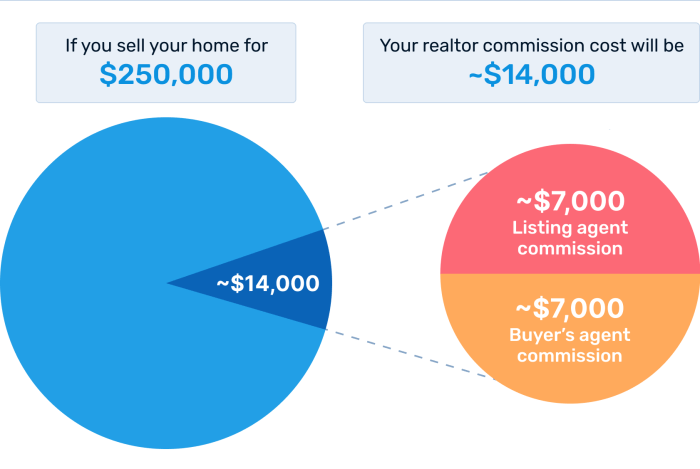2 percent real estate commissions are a common practice in many regions, but what exactly does this mean for buyers and sellers? Understanding the intricacies of these fees is crucial for anyone involved in a real estate transaction. This overview will delve into the factors influencing these percentages and explore potential alternatives.
This discussion will cover the historical context of 2 percent commissions, common scenarios where they are applied, and the various motivations behind their prevalence. Further, we’ll analyze potential implications for both buyers and sellers.

Source: cosmicjs.com
Real estate transactions often involve a commission, a percentage of the sale price paid to the agents involved. A common commission rate is 2%, which can be a significant amount in a real estate deal. This article delves into the intricacies of 2% real estate commissions, exploring its implications, variations, and the factors that influence its use.
What is a 2% Real Estate Commission?
A 2% real estate commission is a standard fee paid to real estate agents (or a team of agents) for their services in facilitating a property sale. This fee is typically split between the buyer’s agent and the seller’s agent, although variations can exist. It’s crucial to understand how this commission is calculated and who receives a portion of it.
How is the 2% Commission Calculated?
The calculation is straightforward: 2% of the final sale price of the property. For example, if a property sells for $500,000, the commission would be $10,000 (500,000 x 0.02). This amount is then typically split between the buyer’s and seller’s agents, often in equal halves, but this division can be negotiated.
Who Receives the Commission?, 2 percent real estate commissions
The 2% commission is typically shared between the buyer’s agent and the seller’s agent. This is a standard practice, but it’s always essential to clarify the specifics of the agreement before the transaction closes. Often, other parties might be involved, such as a broker or an assistant, and the commission split will reflect their contribution.
Factors Influencing the Commission Rate
While 2% is a prevalent rate, several factors can influence whether it’s used or if a different percentage is negotiated. These include:
- Market Conditions: A hot market might see higher commissions, while a slower market might see lower ones.
- Property Type: Luxury homes or unique properties might have higher commission rates than standard residential properties.
- Agent Experience and Reputation: Highly experienced or well-regarded agents might command higher commissions.
- Negotiation: Both buyer and seller agents can negotiate the commission rate to reach an agreeable outcome.
- Local Real Estate Regulations: Specific state or local regulations might impose limitations on commission rates.
Variations in Commission Structures
While 2% is a common commission, variations exist. Some transactions might involve:
- Flat Fees: Instead of a percentage, some agents might charge a flat fee for their services.
- Tiered Commissions: Commission rates might vary based on the sale price or property type.
- Multiple Agents Involved: The commission split might be more complex if multiple agents are involved in the transaction.
Is a 2% Commission Fair?
Determining fairness is subjective. A 2% commission can be considered fair if the value of the agent’s services aligns with the amount received. However, factors like market conditions, negotiation, and the agent’s performance should be considered. This commission rate can be considered high or low depending on the specifics of the deal.
-Friendly s and Related Terms
Real estate commission, commission rate, buyer’s agent, seller’s agent, property sale, real estate transaction, negotiation, market conditions, property type, agent experience, flat fee, tiered commission, commission split, real estate agents, residential properties, luxury homes, real estate market.

Source: archovavisuals.com
Frequently Asked Questions (FAQ)
- Q: Can the commission rate be negotiated?
A: Yes, the commission rate is often negotiable between the buyer, seller, and their respective agents.
- Q: Who pays the commission?
A: The seller typically pays the commission, although the details are typically Artikeld in the agreement.
- Q: What are the common commission splits?
A: The most common split is 50/50 between the buyer’s and seller’s agents, but this can vary.
- Q: Are there any legal restrictions on commission rates?
A: Some jurisdictions may have regulations on commission rates, so it’s essential to consult local regulations.
Conclusion and Call to Action
Understanding real estate commissions, particularly the 2% rate, is crucial for both buyers and sellers. Negotiation, clear communication, and awareness of market conditions are vital. By understanding the intricacies of these fees, you can make informed decisions and ensure a smooth transaction. If you’re considering buying or selling property, consult with a qualified real estate professional for personalized guidance.
Ready to navigate the real estate market with confidence? Contact us today for expert advice.
Disclaimer: This article is for informational purposes only and should not be considered legal or financial advice. Always consult with qualified professionals before making any real estate decisions.
In conclusion, 2 percent real estate commissions, while a standard in many markets, aren’t without their complexities. Understanding the nuances of this practice is essential for making informed decisions. The discussion highlights that alternative commission structures may exist, and the ideal choice depends on individual circumstances and market conditions.
Key Questions Answered: 2 Percent Real Estate Commissions
What are the typical costs associated with a 2 percent commission?
The 2 percent commission is typically split between the buyer’s agent and the seller’s agent, with the exact distribution often negotiated beforehand.
Are there any circumstances where a 2 percent commission might not be applicable?

Source: realestateagentpdx.com
Yes, there are alternative commission structures, such as fixed-fee arrangements, or those based on a percentage of the sale price above a certain threshold. These are sometimes employed in specific situations or markets.
How do 2 percent commissions compare to other commission structures?
Other commission structures, such as tiered models or those that vary based on transaction volume, can impact the total cost to both buyers and sellers.
How can buyers and sellers negotiate these fees?
Open communication and a clear understanding of the market are key. Buyers and sellers can negotiate with their agents to explore different commission structures.